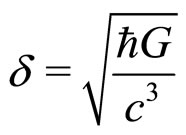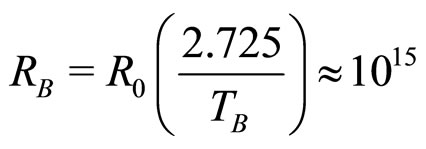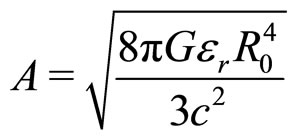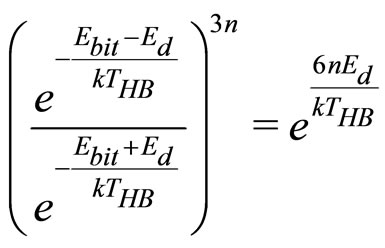Journal of Modern Physics
Vol.3 No.7(2012), Article ID:21078,4 pages DOI:10.4236/jmp.2012.37079
Holography, Charge, and Baryon Asymmetry
84 Marin Avenue, Sausalito, USA
Email: tmongan@gmail.com
Received February 9, 2012; revised March 5, 2012; accepted March 20, 2012
Keywords: baryon asymmetry; charged preon models; holographic principle
ABSTRACT
The reason for baryon asymmetry in our universe has been an open question for many years. This note shows that the holographic principle requires a charged preon model underlying the Standard Model of particle physics and, in consequence, requires baryon asymmetry. The baryon asymmetry predicted by a specific charged preon model in our closed inflationary Friedmann universe is consistent with observations.
1. Introduction
The reason for the dominance of matter over antimatter in our universe has been a relevant issue for years [1]. Several complicated mechanisms have been proposed to account for baryon asymmetry (matter dominance), but they all require new particles or phenomena that have not been observed. In contrast, this note shows that the holographic principle [2] provides a simple mechanism requiring baryon asymmetry The holographic principle, developed from black hole thermodynamics, says all physics at a given point is described by the finite number of bits of information on the particle horizon at the greatest distance from which a light signal could reach the point since the end of inflation. There is a temperature associated with the particle horizon and thermodynamics on the horizon implies gravity is explained by Einstein’s theory of general relativity [3,4].
The outline of this note is straightforward. First, after a brief discussion of the holographic principle, it is pointed out that the finite number of bits of information allowed by the holographic principle necessitates a charged preon model underlying the continuous mathematics of the Standard Model of particle physics. Second, it is noted that the holographic principle states that events within the universe are specified by the information on the particle horizon, and the characteristics of the particle horizon at the time of baryogenesis are determined. Third, it is shown that thermodynamics on the particle horizon at the time of baryogenesis requires baryon asymmetry. Finally, the results are compared with observations and it is noted that a similar analysis requires a lepton asymmetry resulting in a positron excess in the universe.
2. The Holographic Principle
The holographic principle says all information available about physics within a horizon at distance  from an observer is given by the finite amount of information on the horizon. The number of bits of information on the horizon, specified by one quarter of the horizon area in Planck units [2], is
from an observer is given by the finite amount of information on the horizon. The number of bits of information on the horizon, specified by one quarter of the horizon area in Planck units [2], is . The Planck length
. The Planck length , where
, where
 cm3/g∙sec2,
cm3/g∙sec2,
 g∙cm2/sec, and
g∙cm2/sec, and  cm/sec. The following analysis relies on Bousso’s [2] formulation of the holographic principle in terms of the light sheets of the causal horizon, circumventing earlier objections [5-7] to using the holographic principle in cosmological contexts. In particular, the argument applies to a vacuumdominated closed universe, created spontaneously by a quantum fluctuation, that can never collapse [8].
cm/sec. The following analysis relies on Bousso’s [2] formulation of the holographic principle in terms of the light sheets of the causal horizon, circumventing earlier objections [5-7] to using the holographic principle in cosmological contexts. In particular, the argument applies to a vacuumdominated closed universe, created spontaneously by a quantum fluctuation, that can never collapse [8].
Because it involves continuum mathematics, the Standard Model can only approximate an underlying finite-dimensional holographic theory. In particular, a finite dimensional model involving only bits of information on the horizon must describe all physics occurring within the horizon. Linking bits of information on the horizon with Standard Model particles requires a holographic model describing constituents (preons) of Standard Model particles in terms of bits of information on the horizon.
3. Holography Requires Charged Preons
All Standard Model particles have charges 0, 1/3, 2/3, or 1 in units of the electron charge , so bits in a preon model must be identified with fractional electric charge. Furthermore, in any physical system, energy must be transferred to change information in a bit from one state to another. Labelling the low energy state of a bit
, so bits in a preon model must be identified with fractional electric charge. Furthermore, in any physical system, energy must be transferred to change information in a bit from one state to another. Labelling the low energy state of a bit  and the high energy state
and the high energy state  (where
(where  is some non-zero integer depending on the particular preon model chosen) then amounts to defining electric charge. If the universe is charge neutral (as it must be if it began by a spontaneous quantum fluctuation from nothing) there must be equal numbers of
is some non-zero integer depending on the particular preon model chosen) then amounts to defining electric charge. If the universe is charge neutral (as it must be if it began by a spontaneous quantum fluctuation from nothing) there must be equal numbers of  and
and  charges. A holographic charged preon model in such a universe then embodies charge conservation, a precondition for gauge invariance and Maxwell’s equations.
charges. A holographic charged preon model in such a universe then embodies charge conservation, a precondition for gauge invariance and Maxwell’s equations.
Protons have charge  and anti-protons have charge
and anti-protons have charge  Therefore, regardless of the details of how bits of information on the horizon specify a proton or antiproton, the preon configuration specifying a proton must differ in
Therefore, regardless of the details of how bits of information on the horizon specify a proton or antiproton, the preon configuration specifying a proton must differ in  bits from the configuration specifying an anti-proton. Then, because
bits from the configuration specifying an anti-proton. Then, because  bits and
bits and  bits do not have the same energy, the number of protons and anti-protons created in the early universe must be slightly different. In other words, if
bits do not have the same energy, the number of protons and anti-protons created in the early universe must be slightly different. In other words, if  bits have lower energy than
bits have lower energy than  bits, there will inevitably be more matter than anti-matter in the universe. However, a small difference in energy of the bits on the horizon specifying a proton or anti-proton is not inconsistent with protons and anti-protons having identical mass.
bits, there will inevitably be more matter than anti-matter in the universe. However, a small difference in energy of the bits on the horizon specifying a proton or anti-proton is not inconsistent with protons and anti-protons having identical mass.
4. Particle Horizon at Baryogenesis
The temperature at the time of baryon formation was  ˚K, where the Boltzmann constant
˚K, where the Boltzmann constant  (g∙cm2/sec2)/˚K, and the proton mass
(g∙cm2/sec2)/˚K, and the proton mass  g. So, the scale factor of the universe at the time of baryogenesis was [9,10]
g. So, the scale factor of the universe at the time of baryogenesis was [9,10]  cm, where 2.725 ˚K is today’s cosmic microwave background temperature and the scale factor of the universe today is
cm, where 2.725 ˚K is today’s cosmic microwave background temperature and the scale factor of the universe today is  cm. The time
cm. The time  of baryogenesis, in seconds after the end of inflation, can be determined from the Friedmann equation
of baryogenesis, in seconds after the end of inflation, can be determined from the Friedmann equation  . After inflation, the universe is so large it is almost flat, so the curvature parameter
. After inflation, the universe is so large it is almost flat, so the curvature parameter . The energy density is
. The energy density is  , where
, where ,
,  , and
, and  are, respectively, today’s radiation, matter, and vacuum energy densities. Since the radiation energy density [11]
are, respectively, today’s radiation, matter, and vacuum energy densities. Since the radiation energy density [11]  erg/cm3, the matter energy density
erg/cm3, the matter energy density  erg/cm3, and vacuum energy density was negligible in the early post-inflationary universe, the radiation term dominated when
erg/cm3, and vacuum energy density was negligible in the early post-inflationary universe, the radiation term dominated when , before radiation/matter equality. Integrating
, before radiation/matter equality. Integrating  , where
, where  , from the end of inflation at
, from the end of inflation at  to
to  gives
gives , where
, where  is the scale factor of the universe at the end of inflation. Therefore,
is the scale factor of the universe at the end of inflation. Therefore,  seconds, if
seconds, if . The distance
. The distance  from any point in the universe to the particle horizon for that point [12] is
from any point in the universe to the particle horizon for that point [12] is

Since ,
,  cm.
cm.
5. Thermodynamics on the Event Horizon
The surface gravity on the particle horizon at baryogenesis is , so the associated horizon temperature [3] is
, so the associated horizon temperature [3] is  ˚K. The temperature at any epoch is uniform throughout a post-inflationary homogeneous isotropic Friedmann universe, and the causal horizon at baryogenesis is at distance
˚K. The temperature at any epoch is uniform throughout a post-inflationary homogeneous isotropic Friedmann universe, and the causal horizon at baryogenesis is at distance  from every point in the universe. The temperature at every point on the causal horizon for every point in the universe is the same because the surface gravity of the uniform sphere within the horizon is the same at every point on every horizon. The bits on all causal horizons are in thermal equilibrium, and there are only two quantum states accessible to those bits. Therefore, the use of equilibrium statistical mechanics is justified and the occupation probabilities of the two bit states in thermal equilibrium at temperature
from every point in the universe. The temperature at every point on the causal horizon for every point in the universe is the same because the surface gravity of the uniform sphere within the horizon is the same at every point on every horizon. The bits on all causal horizons are in thermal equilibrium, and there are only two quantum states accessible to those bits. Therefore, the use of equilibrium statistical mechanics is justified and the occupation probabilities of the two bit states in thermal equilibrium at temperature  are proportional to their corresponding Boltzmann factors. So, if the energy of an
are proportional to their corresponding Boltzmann factors. So, if the energy of an  bit on the horizon at the time of baryon formation is
bit on the horizon at the time of baryon formation is  and the energy of a
and the energy of a  bit is
bit is , the proton/antiproton ratio at baryogenesis is
, the proton/antiproton ratio at baryogenesis is . Since
. Since  , the proton excess is
, the proton excess is .
.
6. Holography Requires Baryon Asymmetry
Any holographic preon model must link bits of information on the horizon to bits of information specifying the location of preon constituents of Standard Model particles within the universe. The wavefunction specifying the probability distribution for the location of a particular bit of information within the universe has only two energy levels. The energy released when a bit in the universe drops from the (1) to the (0) state raises another bit from the (0) to the (1) state, and that is the mechanism for charge conservation. The energy must be transferred by a massless quantum with wavelength related to the size of the universe. There is no reliable definition of the size (as opposed to the scale factor) of a flat or open universe, so it is necessary to restrict the analysis to closed Friedmann universes. The only macroscopic length characteristic of the size of a closed Friedmann universe with radius (scale factor)  is the circumference
is the circumference . If the energy
. If the energy  to change the state of a bit associated with a preon within the universe (and the corresponding bit on the horizon) at baryogenesis equals the energy of massless quanta with wavelength characteristic of the size of a closed Friedmann universe with radius
to change the state of a bit associated with a preon within the universe (and the corresponding bit on the horizon) at baryogenesis equals the energy of massless quanta with wavelength characteristic of the size of a closed Friedmann universe with radius ,
, . Then, substituting from above, the proton excess at baryogenesis is
. Then, substituting from above, the proton excess at baryogenesis is  . The dependence on
. The dependence on  arises because
arises because , the radius of the universe at baryogenesis, depends on
, the radius of the universe at baryogenesis, depends on , today’s cosmic microwave background temperature 2.725 ˚K, and the temperature
, today’s cosmic microwave background temperature 2.725 ˚K, and the temperature  at baryogenesis. For
at baryogenesis. For  cm, the proton excess is
cm, the proton excess is .
.
7. Comparison with Observations
The WMAP estimate [13] of baryon density to cosmic microwave background photon density ratio is  . A charged preon model [14] with
. A charged preon model [14] with  involves three strands, with charged bits on the end of each strand, bound by non-local forces into each Standard Model particle. At the time of baryogenesis, the number of proton states with six
involves three strands, with charged bits on the end of each strand, bound by non-local forces into each Standard Model particle. At the time of baryogenesis, the number of proton states with six  bits, the number of antiprotons states with six
bits, the number of antiprotons states with six  bits, and the number of photon states with three
bits, and the number of photon states with three  and three
and three  bits are approximately equal. Then, when almost all protons and anti-protons annihilate to two photons, the ratio of baryon to photon states is
bits are approximately equal. Then, when almost all protons and anti-protons annihilate to two photons, the ratio of baryon to photon states is , in good agreement with the WMAP result.
, in good agreement with the WMAP result.
8. Holography Requires Positron Excess
Replacing the proton mass with the electron mass in the above analysis predicts a positron excess of  when the universe cools to the point where electron-positron pairs can survive. This primordial positron excess constitutes a primary source of positrons that might help explain cosmic ray positron excess in the PAMELA experiment [15,16]. The positron excess might also explain part of the asymmetric 511 keV gamma radiation from the galactic center [17].
when the universe cools to the point where electron-positron pairs can survive. This primordial positron excess constitutes a primary source of positrons that might help explain cosmic ray positron excess in the PAMELA experiment [15,16]. The positron excess might also explain part of the asymmetric 511 keV gamma radiation from the galactic center [17].
9. Conclusion
The holographic principle requires a charged preon model underlying the Standard Model of elementary particles and, in consequence, requires baryon asymmetry. So, in charged preon models, thermodynamics on the particle horizon requires baryon asymmetry, and the baryon asymmetry estimated for a closed universe is consistent with observations. This simple explanation for baryon asymmetry suggests baryon asymmetry and the resulting matter dominance in the universe are observational evidence for a substructure beneath the Standard Model. It also suggests the particle horizon is an appropriate focus for efforts to link gravity with quantum mechanics.
REFERENCES
- M. Dine and A. Kusenko, “The Origin of the Matter-Antimatter Asymmetry,” Reviews of Modern Physics, Vol. 76, No. 1, 2004.
- R. Bousso, “The Holographic Principle,” Reviews of Modern Physics, Vol. 74, No. 3, 2002, pp. 825-874. doi:10.1103/RevModPhys.74.825
- T. Padmanabhan, “A Physical Interpretation of Gravitational Field Equations,” arXiv:0911.1403.
- T. Padmanabhan, “A Dialogue on the Nature of Gravity,” arXiv:0910.0839.
- R. Easther and D. Lowe, “Holography, Cosmology and the Second Law of Thermodynamics,” Physical Review Letters, Vol. 82, No. 25, 1999, pp. 4967-4970. doi:10.1103/PhysRevLett.82.4967
- D. Bak and S. Rey, “Cosmic Holography,” Classical and Quantum Gravity, Vol. 17, No. 15, 2000, L83. doi:10.1088/0264-9381/17/15/101
- N. Kaloper and A. Linde, “Cosmology vs. Holography,” Physical Review, Vol. 60, No. 10, 1999, p. 103509. doi:10.1103/PhysRevD.60.103509
- T. Mongan, “A Simple Quantum Cosmology,” General Relativity and Gravitation, Vol. 33, No. 8, 2001, pp. 1415-1424. doi:10.1023/A:1012065826750
- D. Boyanovksy, H. de Vega and R. Holman, “NonEquilibrium Phase Transitions in Condensed Matter and Cosmology: Spinodal Decomposition, Condensates and Defects,” Lectures at NATO Advanced Study Institute: Topological Defects and the Non-Equilibrium Dynamics of Symmetry Breaking Phase Transitions, [hep-ph/ 9903534].
- S. Dodelson, “Modern Cosmology,” Academic Press, San Diego, 2003.
- A. Siemiginowska, et al., “The 300 kpc Long X-Ray Jet in PKS 1127-145, z = 1.18 Quasar: Constraining X-Ray Emission Models,” Astrophysical Journal, Vol. 657, No. 1, 2007, p. 145. doi:10.1086/510898
- J. Islam, “An Introduction to Mathematical Cosmology,” 2nd Edition, Cambridge University Press, Cambridge, 2002.
- C. Bennet, et al., “First Year Wilkinson Microwave Anisotropy Probe (WMAP) Observations: Preliminary Maps and Basic Results,” Astrophysical Journal, Suppl. 1, 2003, p. 175 [astro-ph/0302207].
- T. Mongan, “A Holographic Charged Preon Model,” arXiv:0801.3670.
- A. Adriani, et al., “Observation of an Anomalous Positron Abundance in the Cosmic Radiation,” Nature, Vol. 458, 2009, pp. 607-609. doi:10.1038/nature07942
- P. Serpico, “Possible Causes of a Rise with Energy of the Cosmic Ray Positron Fraction,” Physical Review, Vol. 79, No. 2, 2009, p. 021302. doi:10.1103/PhysRevD.79.021302
- P. Jean, et al., “Early SPI/INTEGRAL Measurements of Galactic 511 keV Line Emission from Positron Annihilation,” Astronomy & Astrophysics, Vol. 407, 2003, L55. doi:10.1051/0004-6361:20031056

